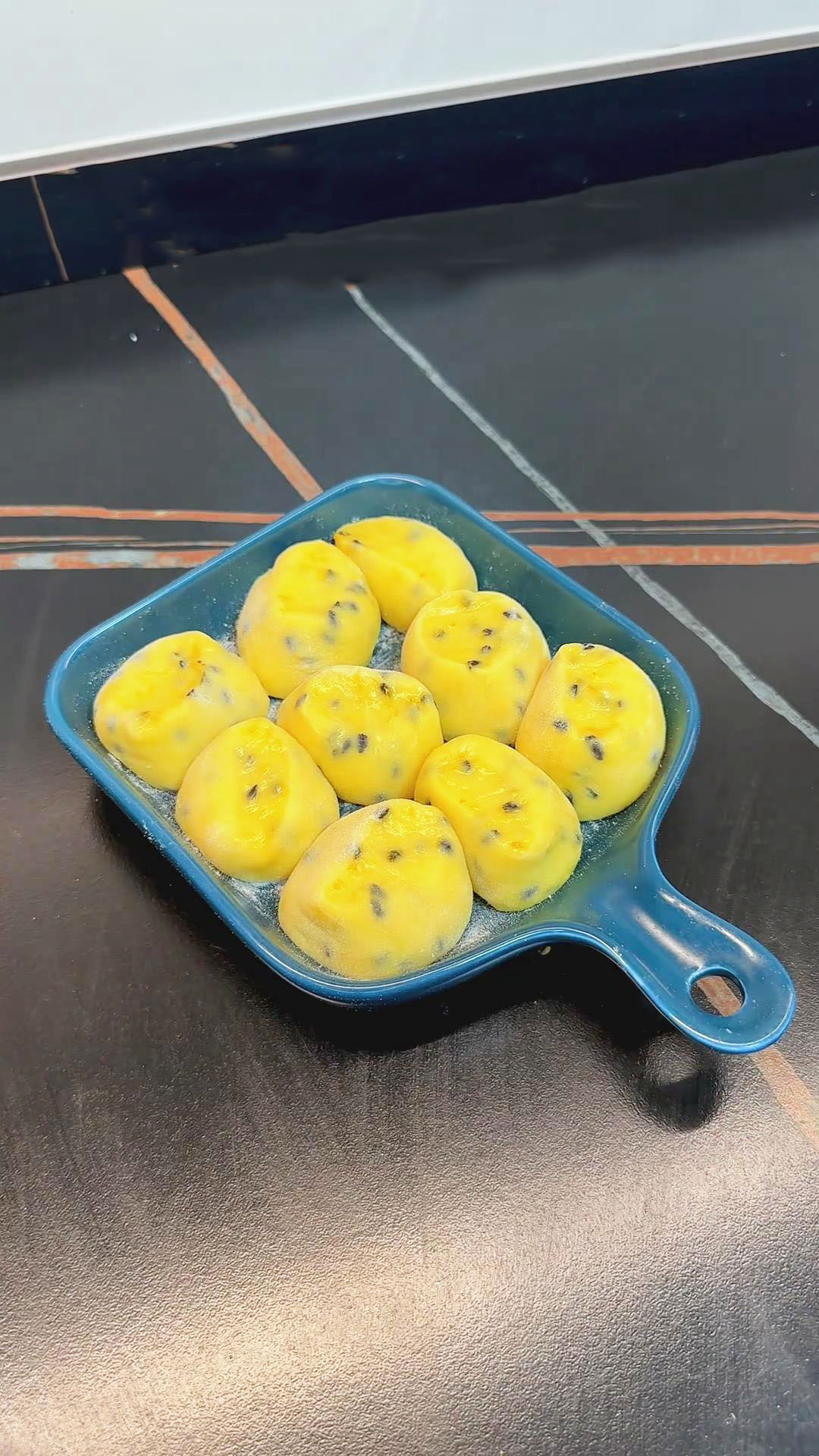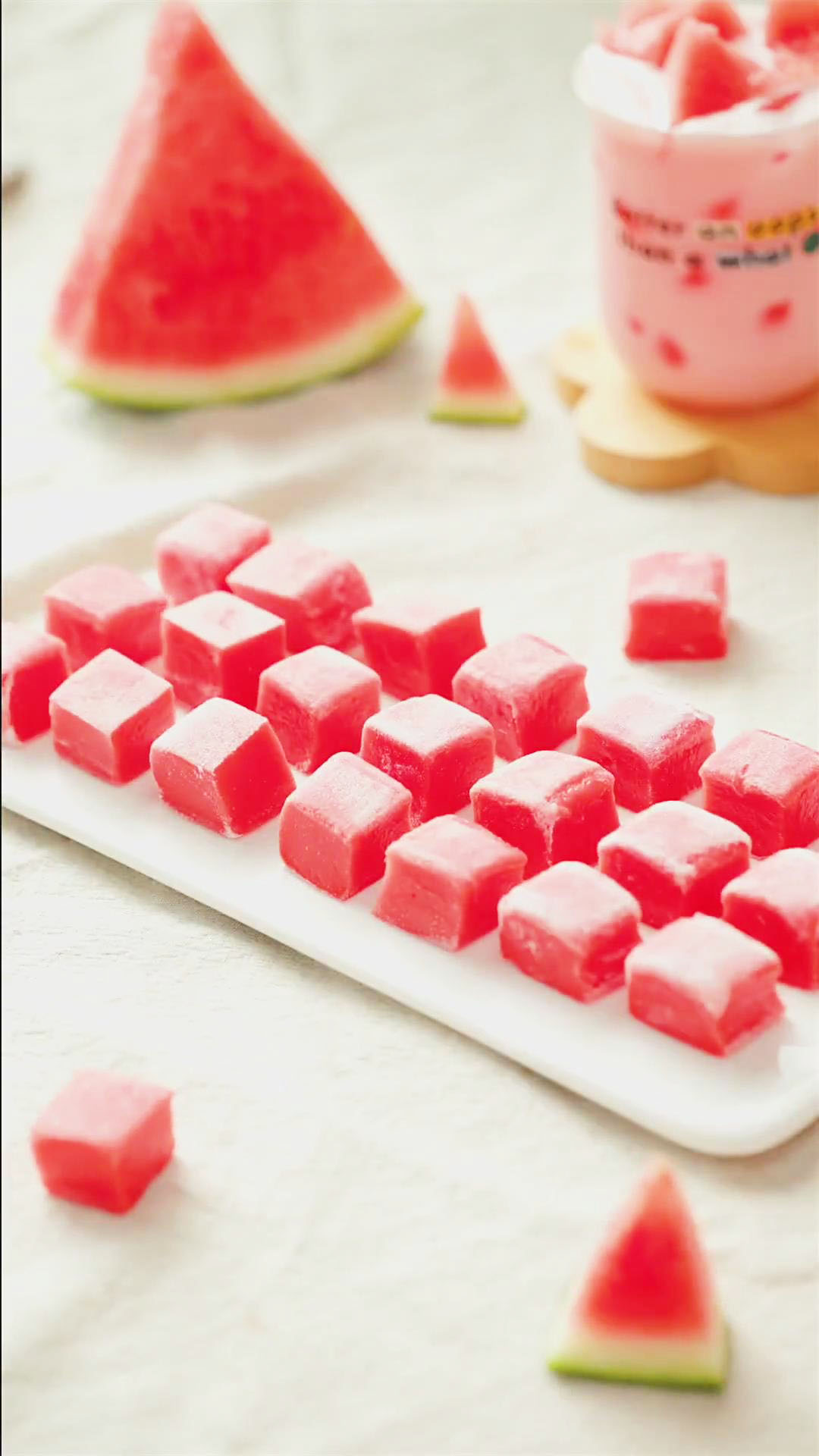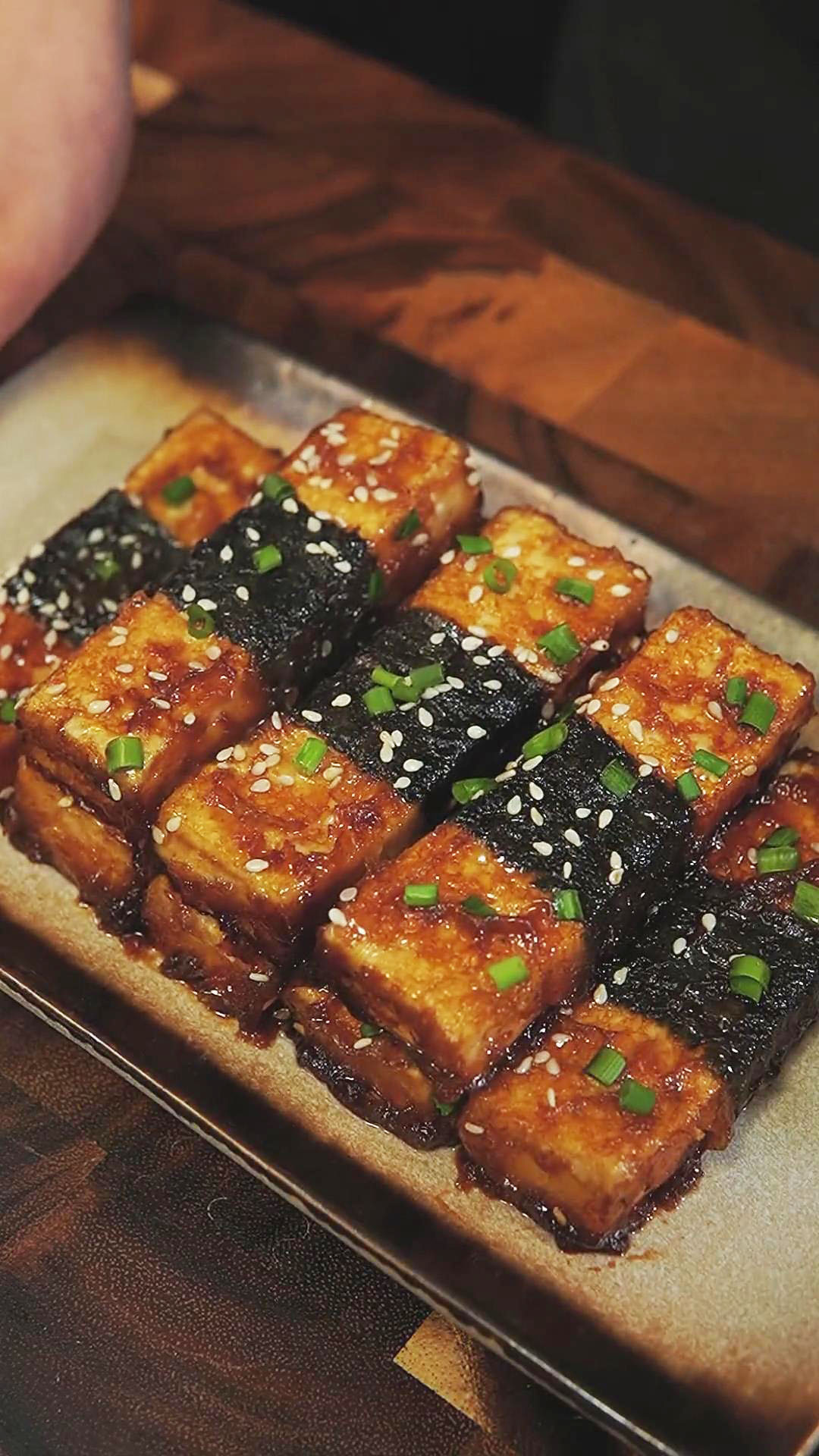This post may contain affiliate links. Please read our disclosure policy.
I have made different variations of mochi, from red bean to taro and strawberry mochi. Now, I created a different take on this Japanese treat by filling it with peanuts, black sesame seeds, sugar, and coconut. It is soft and chewy on the outside and crunchy and nutty on the inside – an irresistible combination of contrasting textures!
What Is Peanut Mochi Sprinkled With Coconut Powder?
Mochi is a traditional Japanese treat shaped like small buns that are eaten year-round, especially on special occasions like Japanese New Year, Children’s Day, and Girls’ Day.
This dessert is notable for its distinct chewy and sticky texture thanks to its special ingredient, glutinous rice flour.
The mochi dough is often combined with other enhancing ingredients, such as cornstarch, white sugar, milk, and oil.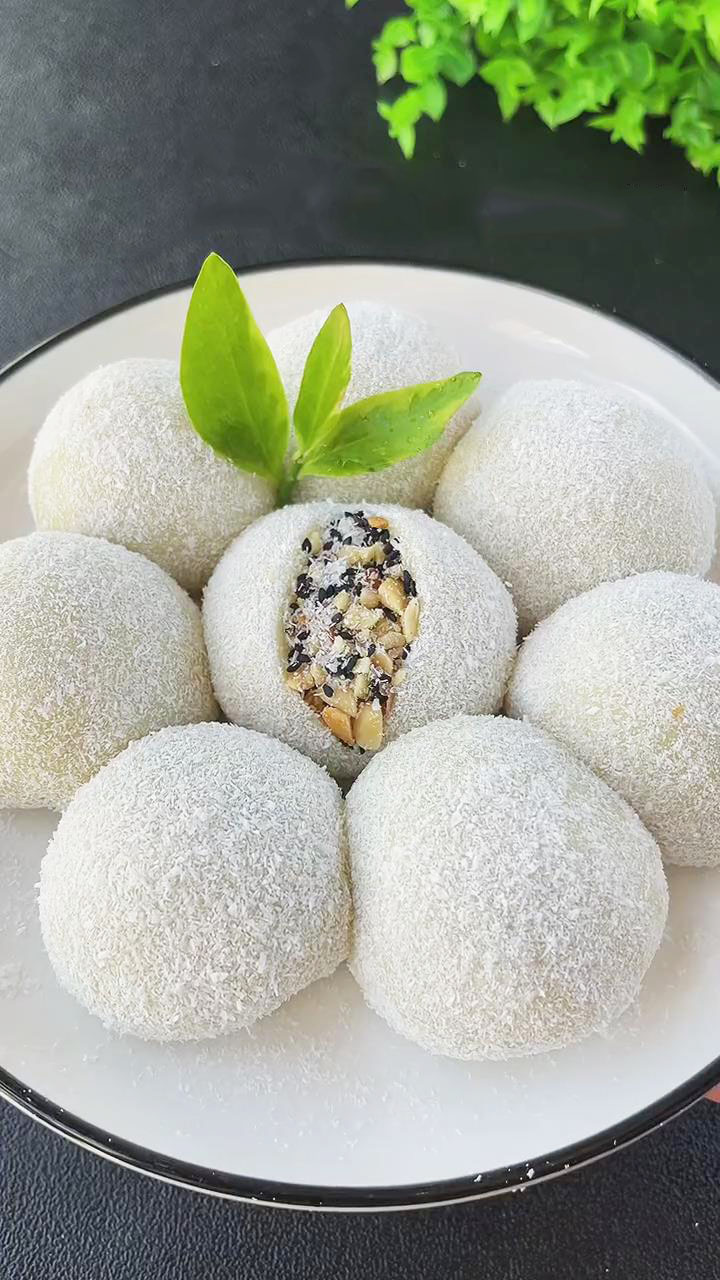
The icing on the cake? The delicious filling, of course! Mochi comes in a wide variety of flavors, colors, and sizes. You can have red bean mochi, taro mochi, strawberry mochi, and mango mochi, to name a few.
For today’s recipe, it is filled with crunchy peanuts, black sesame seeds, sugar, and coconut flakes. Not only is it a burst of flavor on the inside, but on the outside as well with its coconut flakes coating.
All you gotta do is steam and knead the mochi dough, blend the nutty filling, and assemble your mochi – simple steps that can be done in less than an hour!
What Makes Glutinous Rice Flour So Important
As I have mentioned, glutinous rice flour is responsible for making mochi have its distinct sticky and chewy texture.
It is the kind of texture where it sort of sticks to your teeth and stretches as you bite it off. From the name itself, ‘glutinous’ refers to its glue-like and sticky features when cooked.
Is there another type of flour that can do the exact same texture? Unfortunately, no other flour can do this and that is why this cannot be omitted or replaced in the recipe. So if you plan to make mochi, I suggest buying this beforehand in your local Asian grocery stores or online markets like Amazon.
When buying this flour, do not confuse this with another special flour, rice flour.
Keep in mind rice flour is made from long or medium-grain white rice, such as japonica, sinandomeng, angelica, or indica, whereas glutinous rice flour is made from sticky rice.
Rice flour produces a slightly chewy texture and not the same sticky textures as glutinous rice flour.
The Best Peanut Mochi Tips And Tricks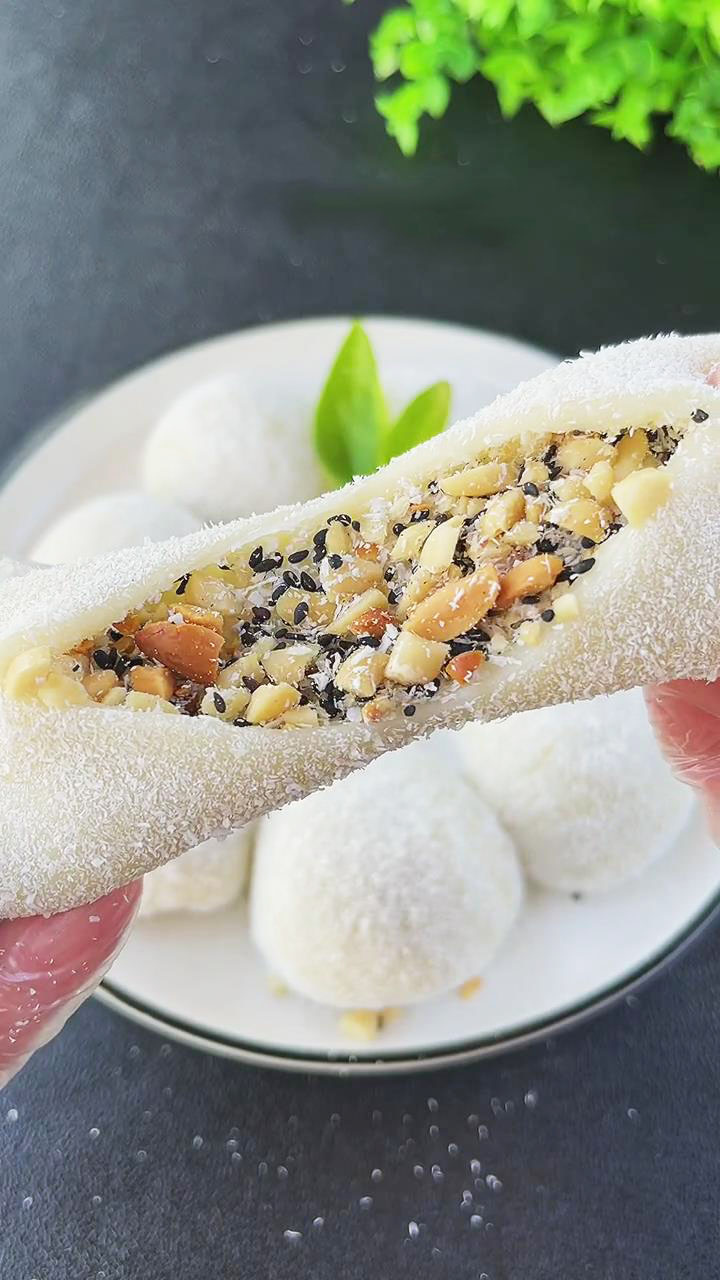
My mochi-making experience has led me to discover several helpful techniques and ingredient tips. So, I listed them below for your guidance and to assist you along the way.
If you’d like to share your own tips and recommendations as well, write down below in the comments section and let us know!
Mochi Dough
- Glutinous rice flour: As you already know, glutinous rice flour is the only non-negotiable ingredient. Do not remove or replace this ingredient if you want to experience the traditional mochi texture as I have described above. Don’t worry about buying too much glutinous rice flour since you can use this for other recipes like Homemade Ham Sui Gok 咸水角 (Fried Glutinous Rice Dumplings) and Festive Snow Skin Mooncakes. Trust me, it’s worth buying this special flour! But if you really want to try this recipe without this special flour and don’t mind having a different texture, I would suggest using tapioca starch. Adjust the amount of tapioca starch to get a desirable chewy texture and add a bit of sugar to make it sweeter.
- Sugar: Use white sugar if you want to achieve a white mochi base. If you don’t mind a hint of brown, you can also use brown sugar, coconut sugar, cane sugar, or muscovado sugar.
- Cornstarch: Glutinous rice flour and cornstarch work hand in hand to create the best texture. Cornstarch helps add more thickness and chewiness to the mochi dough. You can substitute this with the following alternatives:
- All-Purpose Flour (1:1 ratio)
- Arrowroot Powder (1:1 ratio)
- Tapioca Starch/Flour (1:1 ratio)
- Potato Starch (1:1 ratio)
- Rice Flour (1:1 ratio)
- Milk: In order to make the dough creamy and rich in flavor and texture, I add a small amount of milk. You can use regular milk or any dairy-free milk like soy, oat, or almond. For a stronger coconut taste, I suggest coconut milk or coconut cream with water. Don’t have milk? That’s okay since you can simply use water to liquify the dough. However, it may not be as creamy and rich as when milk is used.
- Oil: Oil like corn oil is best for its lightweight and neutral taste that won’t affect the taste and texture of the dough. Other neutral oils are peanut oil, soybean oil, and vegetable oil. Adding this makes the dough more moist and fluffy. Aside from oil, you can also use melted butter.
- Coating: After assembling the mochi dough with the filling, the last part is sprinkling coconut flakes to have an additional thin coating. You can use coconut milk powder, coconut flakes, or shredded coconut. Make it more colorful by using colored powders like purple potato powder, red potato powder, or green matcha powder, to name a few.
- Cooking method: A way to cook the mixed dough is by steaming it for 30 minutes. This makes it firm up and become pliable for kneading and stretching. You can use a steamer or these 5 methods to steam without a steamer: pan with steamer rack, microwave, pan with sieve, rice cooker, and instant pot.Aside from steaming, you can also cook it by pan-frying. I used this method in my other mochi recipes, such as taro mochi and strawberry mochi.
Peanut Filling
- Peanuts:Use cooked peanuts, such as boiled, roasted, or salted. You may find different types of peanuts like Runner, Spanish, Valencia, and Virginia. If you need to substitute peanuts, go for Brazil nuts, pili nuts, and sunflower seeds.
- Black sesame seeds: Opt for cooked or toasted black sesame seeds.This adds a nutty flavor and a crunchy texture. You can also use white sesame seeds which are less potent than black. If you have uncooked black sesame seeds, toast them in a non-stick pan over medium heat for a few minutes until fragrant. Do not overtoast them or they will taste bitter and burnt.
- Sugar:Use any type of sugar you have, such as white sugar, brown sugar, coconut sugar, cane sugar, or muscovado sugar. Adjust the amount according to your desired sweetness.
- Coconut powder: Make the coconut taste stronger by adding coconut powder, flakes, or shreds. Adjust the amount depending on how strong you want the coconut flavors to be.
- Filling alternatives: Aside from the crunchy peanut filling, you can make more flavors or add creaminess if you prefer with the following filling suggestions:
- Yam paste
- Lotus seed paste
- Purple sweet potato paste
- Black sesame paste
- Taro paste
- Red bean paste
- Matcha bean paste
- Cheesecake
- Mung bean paste
- Ice cream
Prepare These Kitchenware And Ingredients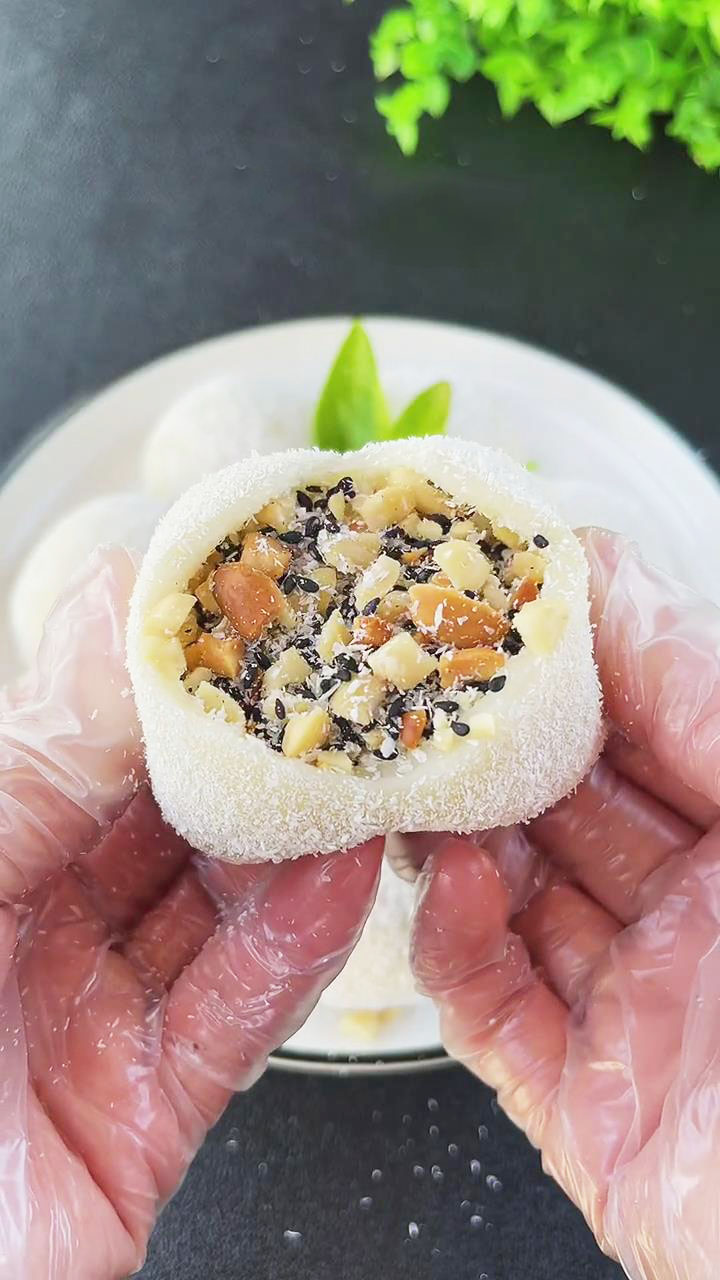
Prepare your steamer or non-stick pan to cook the dough. You will also need a mixing bowl, stirrer, kitchen gloves, and a dough cutter or knife. These are the only basic kitchen items you need, which makes making mochi a favorite recipe for dessert lovers who prefer a simple recipe.
Also, you will need these ingredients:
- Mochi dough:
- 150g glutinous rice flour
- 30g corn starch
- 30g white sugar
- 210ml milk
- 30g oil
- Peanut filling:
- 100g cooked peanuts
- 40g black sesame seeds
- 30g white sugar
- 30g coconut (powder, shredded, or flakes)
- Coconut coating (powder, shredded, or flakes)
- Optional garnish (mint leaves)
How To Prepare Peanut Mochi Sprinkled With Coconut Powder
It is a super simple recipe that requires making the dough and filling, assembling the mochi, and sprinkling it with coconut.
Steaming the mochi dough only takes half an hour but may require some time and work when kneading and shaping it. Watch how I executed these steps through my Instagram or TikTok tutorial reels.
- In a steamer-safe bowl, mix the glutinous rice flour, sugar, corn starch, milk, and corn oil. Make sure there are no lumps left in the mixture.
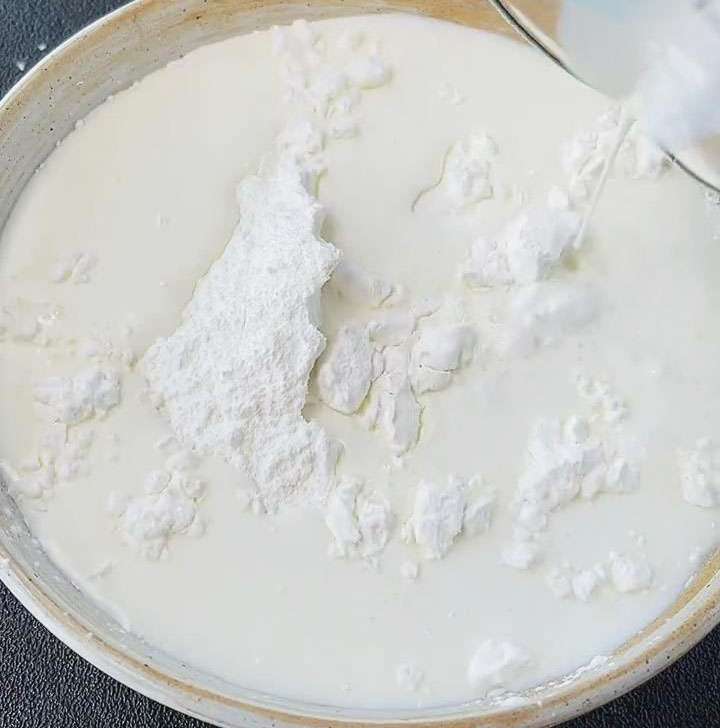
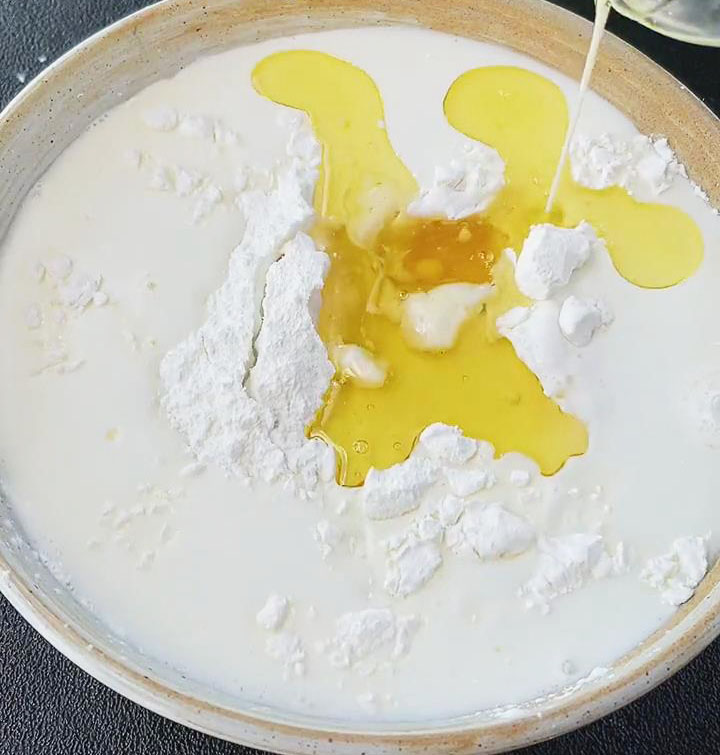
- Transfer the bowl to a steamer. Before steaming, you can also cover the bowl with a plastic wrap with tiny holes to prevent moisture from dripping in the bowl.
- Steam for 30 minutes and allow it to cool down for kneading. Alternatively, cook this mixture in a non-stick pan until it solidifies and becomes pliable for kneading.
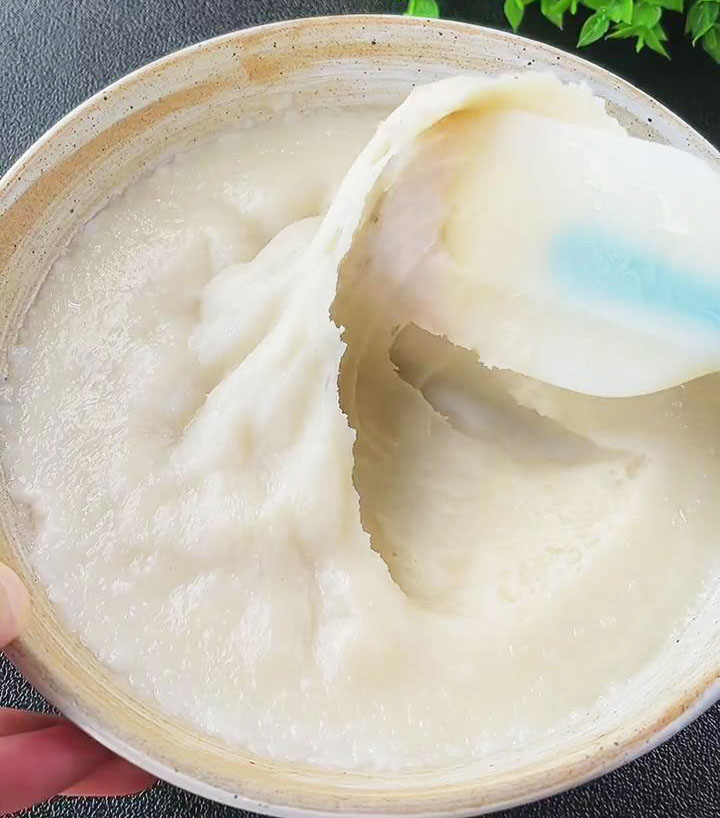
- Once it is cool enough to touch for kneading, knead and stretch for about 5 minutes or more for that perfect elasticity. It should stretch without breaking.
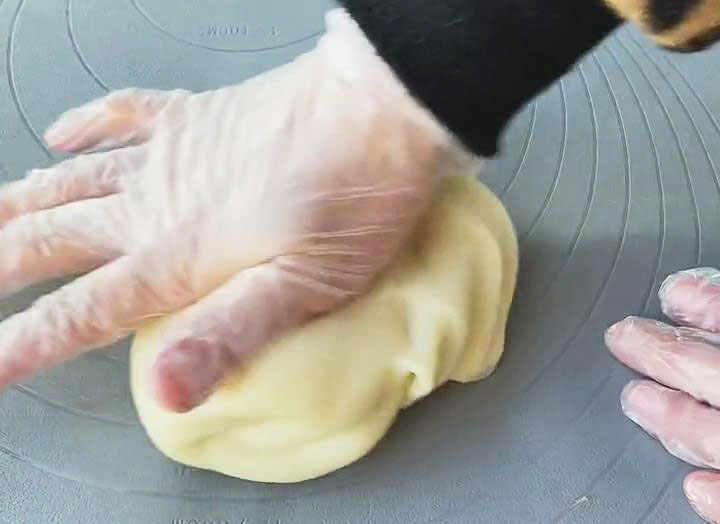
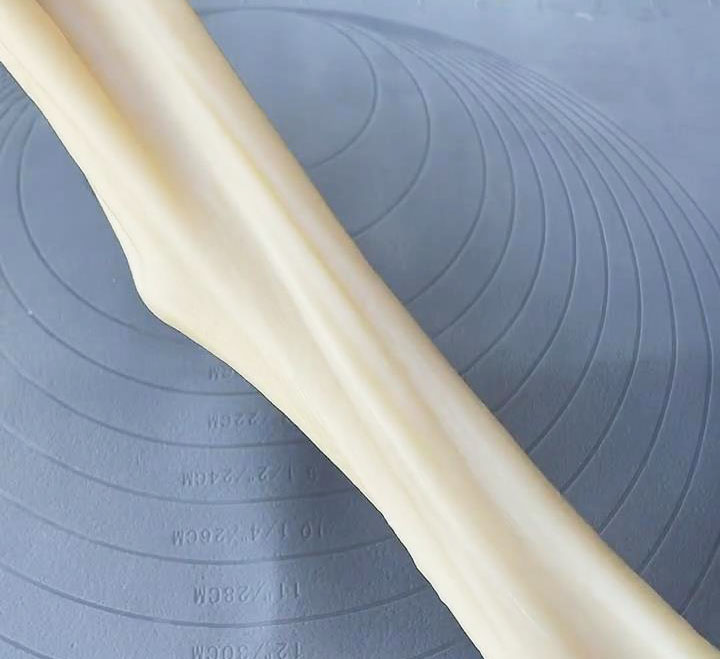
- Roll the dough into a log.
- Divide it into about 1-inch equal portions using a dough cutter or knife. Set aside.
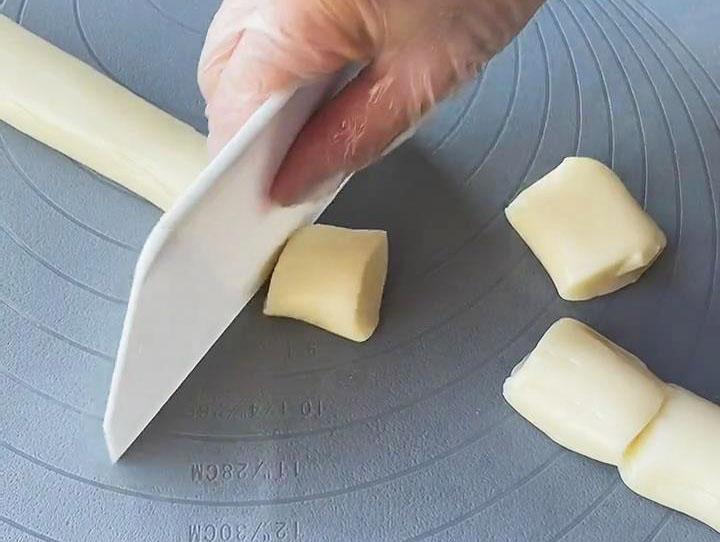
- For the peanut filling, combine cooked peanuts, toasted black sesame seeds, sugar, and coconut. Mix everything well in a bowl.
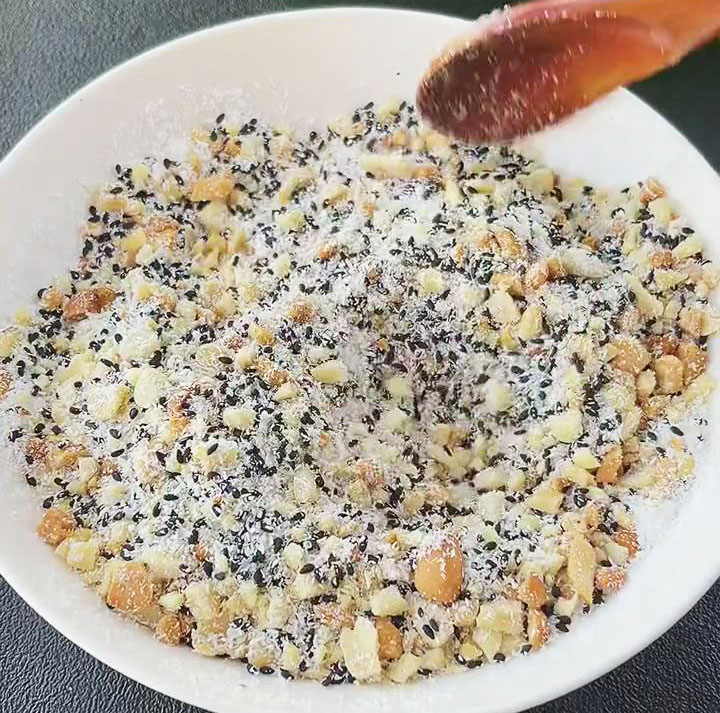
- Take a dough portion and flatten it into a thick circular wrapper.
- Place about a tablespoon of filling in the center of the wrapper.
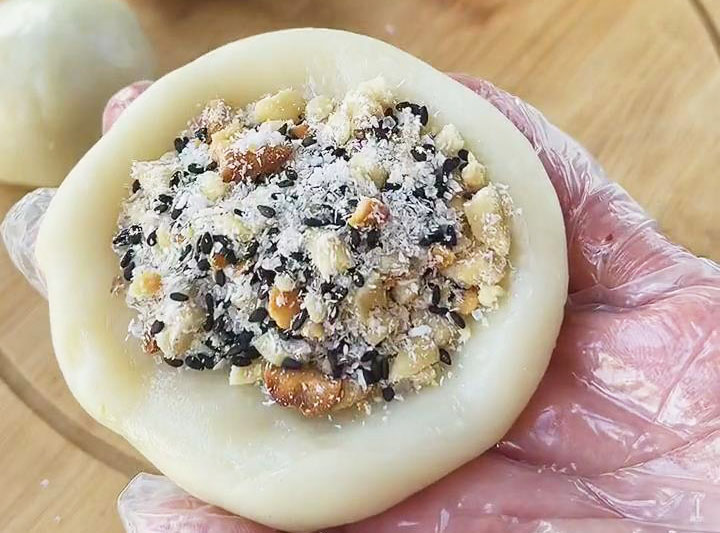
- Seal the wrapper by pinching the edges together. This should form a smooth mochi ball.
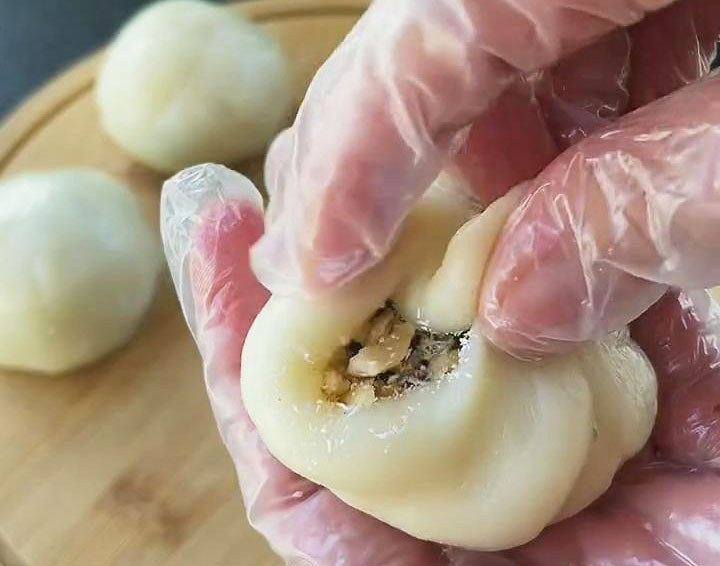
- Place coconut powder or flakes in a bowl and evenly coat the entire surface of the mochi ball.

- Place your mochi on your serving place and decorate it with a garnish if you prefer.
Was this peanut mochi recipe a hit for you? If you have some extra peanuts or black sesame seeds left, try making Mee Jiang Kueh (Peanut Pancake), Crunchy And Sweet Snowflake Crisps Recipe, or Chinese Sachima Soft Flour Pastry Cake (沙琪瑪).
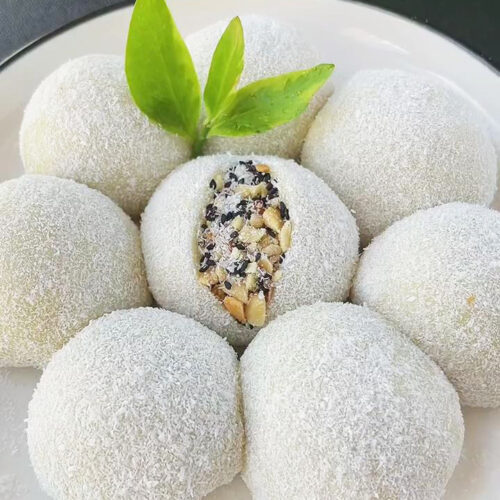
Peanut Mochi Sprinkled With Coconut Powder
Ingredients
Mochi dough:
- 150 g glutinous rice flour
- 30 g corn starch
- 30 g white sugar
- 210 ml milk
- 30 g oil
Peanut filling:
- 100 g cooked peanuts
- 40 g black sesame seeds
- 30 g white sugar
- 30 g coconut powder, shredded, or flakes
- Coconut coating powder, shredded, or flakes
- Optional garnish mint leaves
Instructions
- In a steamer-safe bowl, mix the glutinous rice flour, sugar, corn starch, milk, and corn oil. Make sure there are no lumps left in the mixture.
- Transfer the bowl to a steamer. Before steaming, you can also cover the bowl with a plastic wrap with tiny holes to prevent moisture from dripping in the bowl.
- Steam for 30 minutes and allow it to cool down for kneading. Alternatively, cook this mixture in a non-stick pan until it solidifies and becomes pliable for kneading.
- Once it is cool enough to touch for kneading, knead and stretch for about 5 minutes or more for that perfect elasticity. It should stretch without breaking.
- Roll the dough into a log.
- Divide it into about 1-inch equal portions using a dough cutter or knife. Set aside.
- For the peanut filling, combine cooked peanuts, toasted black sesame seeds, sugar, and coconut. Mix everything well in a bowl.
- Take a dough portion and flatten it into a thick circular wrapper.
- Place about a tablespoon of filling in the center of the wrapper.
- Seal the wrapper by pinching the edges together. This should form a smooth mochi ball.
- Place coconut powder or flakes in a bowl and evenly coat the entire surface of the mochi ball.
- Place your mochi on your serving place and decorate it with a garnish if you prefer.

